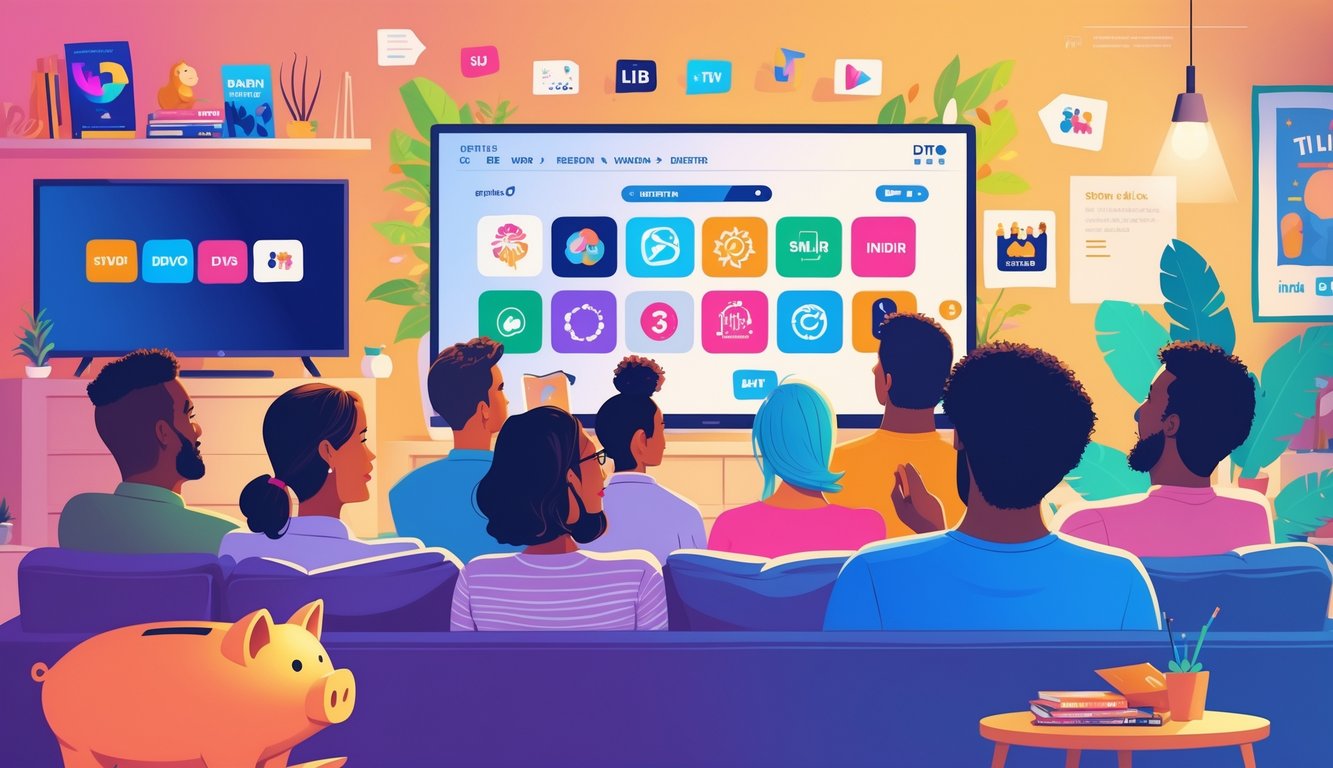
How Smaller Networks Compete With Streaming Giants

Everything’s crowded—Prime Video has everything and nothing, Disney+ is just Marvel and Star Wars, Netflix pushes whatever is trending this week. Meanwhile, the little guys—niche streamers, OTT networks (ugh, “OTT,” who came up with that?)—just keep showing up. Sometimes I wonder if anyone notices besides superfans, but they must, right? Otherwise, why are there so many?
Comparing Netflix, Hulu, and Others
Comparing Netflix or Hulu to Acorn TV or Crunchyroll feels weird. It’s like comparing a giant supermarket to a thrift store that only sells socks. Parrot Analytics says smaller streamers’ global originals share jumped 36% last year. So, something’s working.
The niche services lean into what the big ones skip: hyper-specific shows, regional stuff, subcultures you didn’t know existed. Hulu gets the big originals, MAX does prestige, but then I’ll find a Scandinavian noir on a random app—no subtitles anywhere else. Jonathan Laor at Applicaster (I had to look him up) told Cynopsis that smaller companies can “move faster than the giants” and build custom apps fast. I mean, I guess? The tech is there.
Also, big platforms sometimes cut back on originals, leaving space for the small guys—that’s what the market reports say, anyway. I still don’t get why Shudder exists (all horror, all the time?), but hey, someone out there loves it. If only MAX would stop changing its logo every six months so my home screen would stay the same.
Ad-Supported Streaming as a Gamechanger
Never thought I’d care about ads after quitting cable, but here we are. Freevee, Pluto TV, “with ads” Netflix—it’s all back. The smaller networks actually get creative with this, like local news or foreign shows with ads I can’t skip.
Some consultant I met in New York (wish I remembered their name) swore that smart ad tech lets small services make money off even tiny audiences. Their words, not mine. I guess that means we get weirdly specific ads—like a typewriter commercial during a 1930s Italian drama.
TVTechnology says these niche platforms, when they team up with data-driven ad companies, squeeze more value out of every viewer. No Mandalorian-level budgets, but they make it work—personal, loyal, sometimes interactive. Meanwhile, my streaming bill is starting to look suspiciously like my old cable bill, but with more forgotten logins.
Cost-Effective Entertainment Options

Every week, I try to budget, and every week I lose track—fifteen free trials, three I forgot to cancel, whoops. But these smaller networks? They sneak in with cheap plans you barely notice unless you’re obsessively tracking expenses. Honestly, I’ve seen people drop more on a sandwich than a month of niche streaming, and sometimes the shows are just as good—maybe even better, but don’t quote me on that.
Lower Subscription Fees
Hang on, let’s talk about subscription prices for a sec because, wow, I just spent an hour last night staring at a spreadsheet trying to figure out why Apple TV+ is like $9.99 a month and somehow that feels cheaper than my stupid oat milk latte. Is it really always that low? Maybe I’m missing something, but Apple TV+ just throws in all their originals for that price—no “premium” upcharge for some exclusive show I’ll never watch. Paramount+ is doing something under $8 next year, or so the earnings call people say. Supposedly, these smaller services crank out almost a third more US-based series for each dollar than the big dinosaurs. That’s what the consultants claim, anyway. I don’t know, sounds inflated, but whatever.
Disney+, Netflix, Max—they love their complicated tiers and big numbers. But the math is right there. Even the best streaming bundles in 2025 start “with ads” under $10, but let’s be real, that’s just the sticker price. Smaller networks? They skip the nonsense and just charge weirdos like me for the weird stuff I actually want. No one mentions that at checkout. My friend still tries to Venmo me for her third of a $17.99 Netflix bill. I pay less by myself. How is that possible? Ridiculous.
Free Trials and Limited-Time Offers
If you shop around, things get even dumber. Free trials. “Limited time” deals. Random 30-day unlocks. Nobody believes me until I show them the screenshots: last March, I stacked AMC+ for a week, Philo for another, Pluto TV tossed in ad-free streaming just because I signed up—no credit card, nothing. Even those Discovery and HBO bundles dropped some two-month $3.99 bait right before award season, which, wow, that worked on me.
Honestly, I can’t keep up. Free trials sound great until you forget to cancel and get charged for a year of “premium” cooking shows. (Happened. Not proud.) Some of them sneak in annual discounts, device upgrades, whatever, and it’s all buried in the fine print. At least monthly plans don’t trap you anymore—commitment issues finally pay off, I guess. If “best affordable streaming” is even a thing, Newsweek’s list is more like a scavenger hunt than a guide. I try to keep track, but I just keep signing up for stuff and hoping I remember my passwords.



